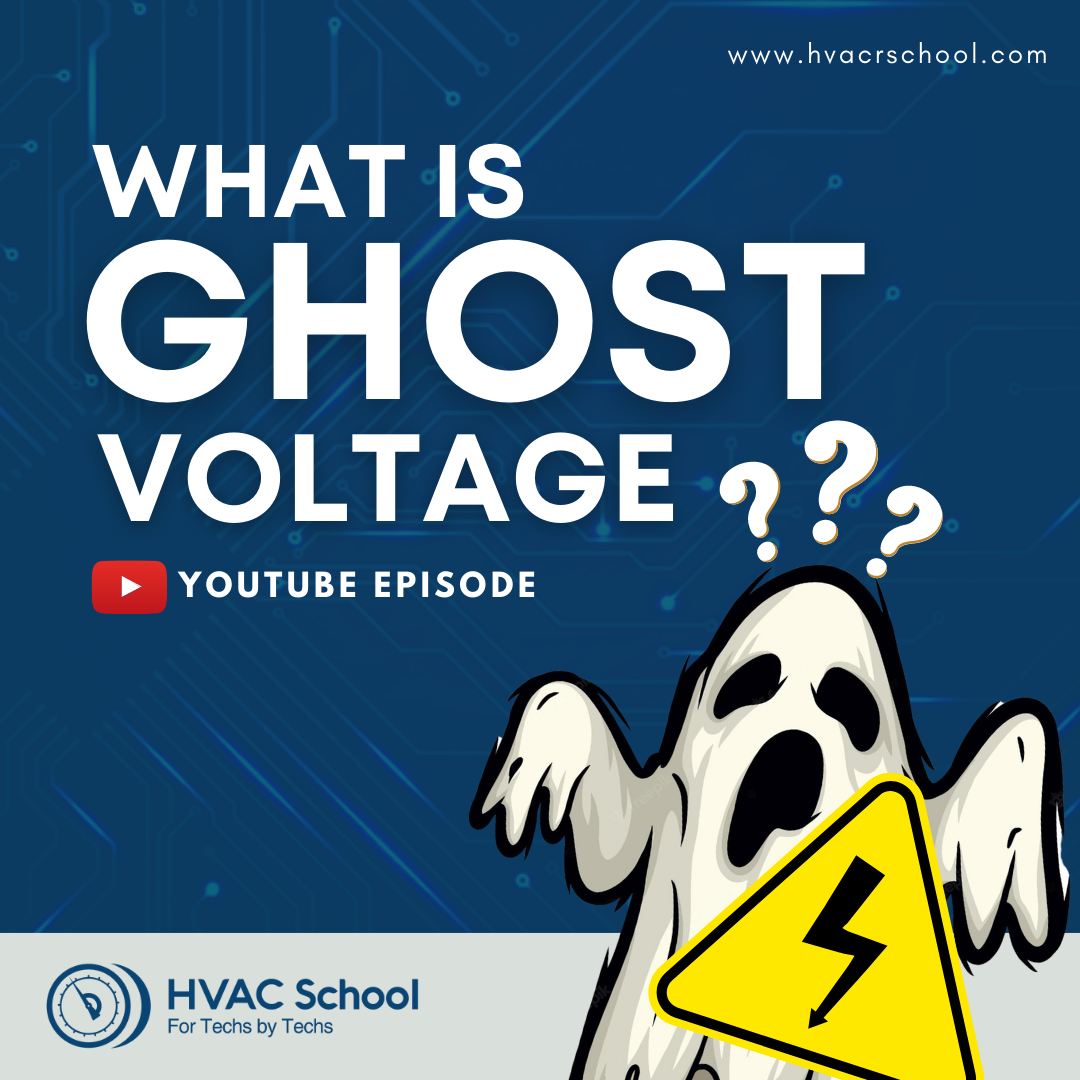What is Ghost Voltage?
June 29, 2022


“Ghost” voltage refers to a voltage that we can detect but that doesn’t appear to be doing anything. It could also exist but go away once the circuit is energized. It can be useful to think about there being static pressure against water pipes and then having it go away when a faucet starts running.
The meter itself is a load, as it creates an electrical path. A meter has very high resistance, and you’ll see voltages across the meter due to that high resistance of the meter. When there is an actual current and a lower-resistance load in the circuit, the “ghost” voltage disappears.
When you energize the primary on the transformer and have an open circuit on the secondary, that transformer does not appear to draw any current even though we have 240v of electrical potential. Instead, there’s an excitation current, which is a very small current due to inductive reactance and back EMF.
We often imagine that electricity consists of electrons moving in one direction, but electrons are really a bunch of tiny energy units that move erratically. The sine wave generates the motion of electrons, and the sine wave represents an electromagnetic field that generates the circular motion of a motor. So, adjacent wires can be affected by the electromagnetic field if they’re within range; they pick up tiny amounts of voltage in a phenomenon called “induction,” which is what happens when power from the primary goes to the secondary without actually touching the secondary. The same principle applies to the interaction between two sides of a capacitor.
So, whenever possible, we want to keep conductors as far apart as possible. We can also use meters that have a low-Z setting, which uses a lower resistance than a typical meter and doesn’t pick up those “ghost” voltage readings.
We can also see ghost voltage when you measure across a load (like a contactor coil) when you have an open thermostat switch. You may end up with 24v across the load, but that could drop to 0v when the switch closes. That’s because there could be additional resistance in the circuit, and the voltage drop exists because the movement of electrons is dynamic rather than static. When that happens, you can look for poor connections or other causes of high resistance.
Comments
To leave a comment, you need to log in.
Log In